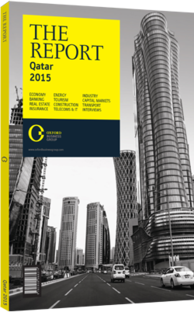More options for foreign investors open in Qatar's accountancy and tax rules
For years, there have been three tax regimes in Qatar in which foreign investors could operate: the state of Qatar, the Qatar Financial Centre (QFC), and the Qatar Science and Technology Park (QSTP). Historically, most foreign investors have set up in the state, but recent changes are encouraging investors to reconsider.
STATE OF QATAR: The main legal forms available to foreign investors operating in the state have been a contract-specific branch or a limited liability company (LLC). A branch has generally only been available to foreign investors with a governmental or quasi-governmental contract and its life is limited to the contract duration. With either legal form, there is a requirement to file annual corporate income tax (CIT) returns. Profits attributable to foreign nationals are generally subject to CIT of 10%. This means that all of the profits of branches of foreign firms are taxable, whereas with LLCs the 10% tax rate applies to the profits attributable to the foreign shareholder. Legally, foreign ownership of an LLC is normally limited to 49%; however, the profit attribution need not follow the same allocation. This disconnect between legal ownership and profit share is a hurdle for foreign investors. Other key areas that require consideration are rules and requirements on:
• Transfer pricing;
• Withholding tax; and
• Retentions. The recent introduction by the Public Revenues and Taxes Department (PRTD) of the online Tax Administration System (TAS) has been a welcome development that improves the efficiency of tax administration. One development arising from the introduction of TAS is that all returns filed online must provide their commercial registration number. This commercial registration number cannot be obtained without creating a legal form and, therefore, permanent establishments must register as a branch or incorporate as an LLC.
QFC: QFC was established in 2005 to attract international financial institutions and multinational corporations. Operating in parallel with Qatar state law, QFC provides a regulatory and control environment akin to business and tax regimes in developed jurisdictions. QFC regulations contain over 150 articles (compared to 59 articles in the state tax law) and cover areas like tax grouping, intra-group transfers and transfer pricing.
The QFC has also issued manuals and explanatory notes providing guidance to taxpayers. Companies in the QFC may be wholly owned by foreign investors. Payments made to QFC entities are not subject to withholding tax or retention and QFC entities are not required to withhold on payments to non-residents. The QFC Authority has expanded the scope of permitted, non-regulated activities to include services like intellectual property management and treasury for all sectors, and consultancy services for IT, real estate, recruitment, and sports and event management. Businesses that are not regulated that might previously have set up contract-specific temporary branches under state law can incorporate within the QFC as a 100% foreign-owned entity.
The QFC is also available to Qatari investors and they enjoy benefits similar to those awarded under the tax law, provided the business is 90% Qatari owned.
QSTP & FREE ZONES: Aimed at incubating and growing Qatar’s post-carbon economy and developing Qatar National Vision 2030, QSTP was established to encourage international corporations and research institutes from around the world to develop and commercialise technology in Qatar and launch entrepreneurial technology businesses. QSTP entities can be fully exempt from Qatar tax; however, tax-exempt entities are required to file tax returns with the PRTD.
Although currently full, the QSTP free zone is expanding to accept more firms. The expansion and management contract was awarded to Manateq, which is also overseeing development of three special economic zones in Qatar. Commercial and operational factors are the main incentives drawing foreign investors to the Qatar market, but it is important for them to select the appropriate legal form and tax regime in which to operate, as they now have more choices to consider.
You have reached the limit of premium articles you can view for free.
Choose from the options below to purchase print or digital editions of our Reports. You can also purchase a website subscription giving you unlimited access to all of our Reports online for 12 months.
If you have already purchased this Report or have a website subscription, please login to continue.

